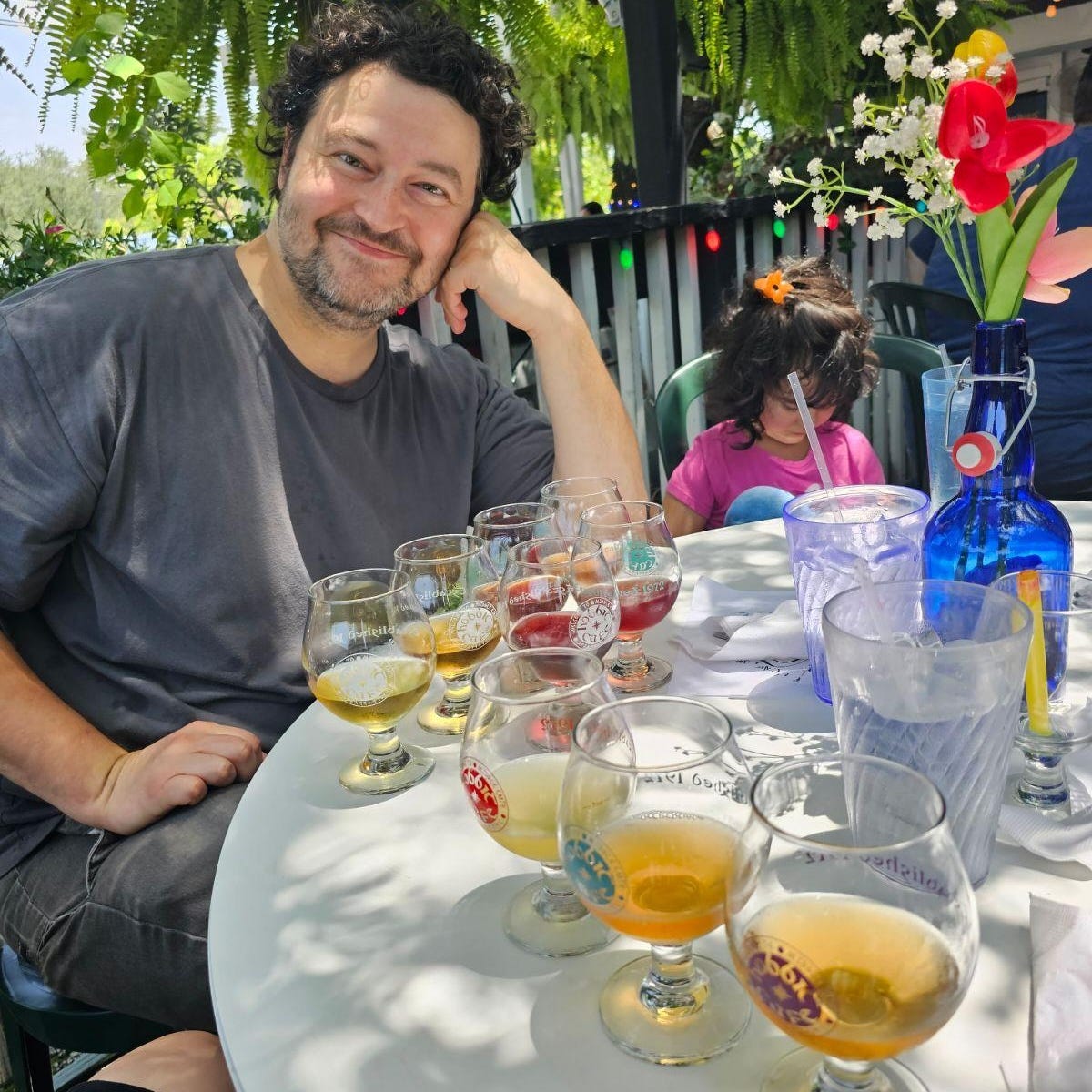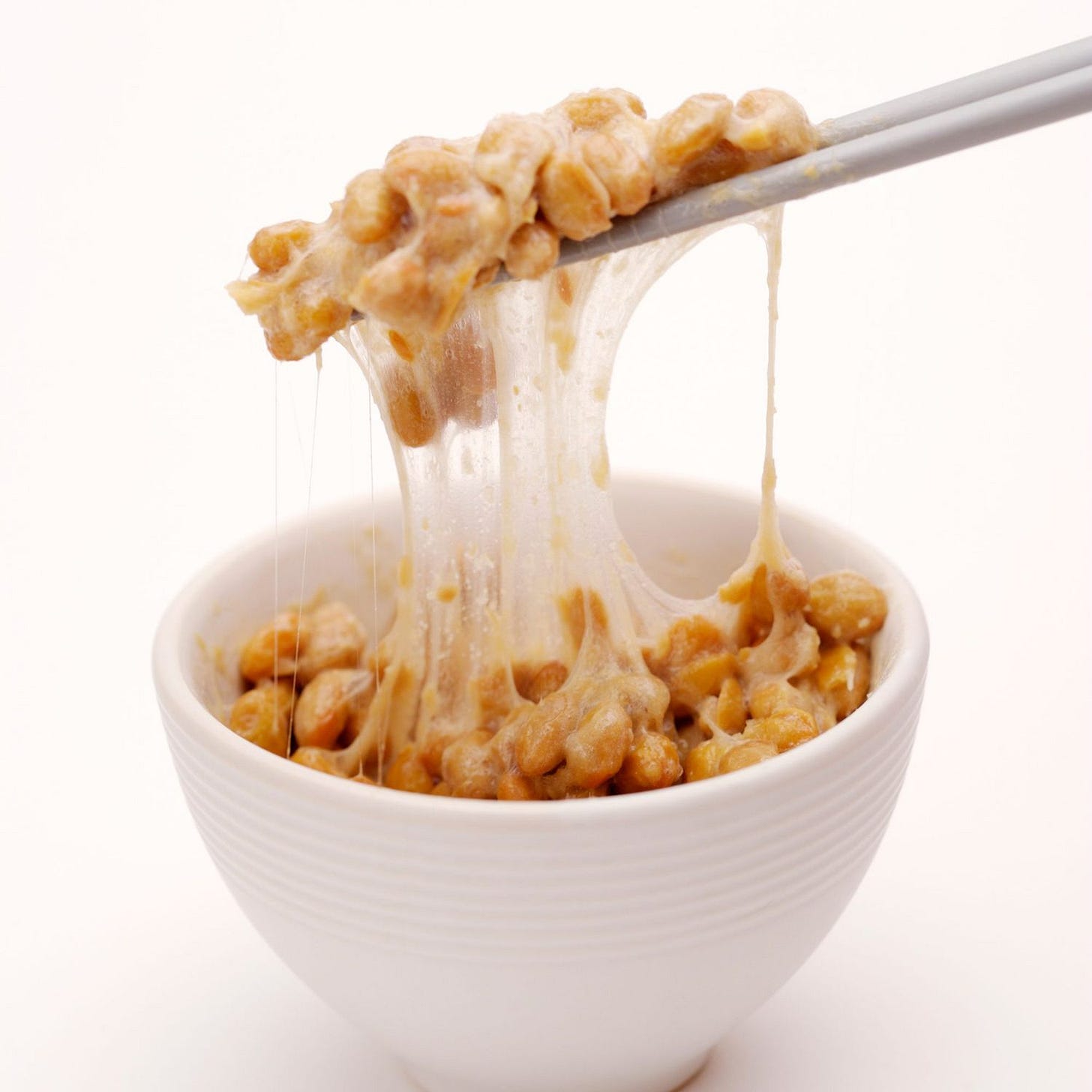Fermentation Basics You Ought to Know
From wine to sauerkraut to chocolate...
Until fairly recently, I’d always associated fermentation with alcohol (beer, wine, liquor…). I’d heard that certain foods were fermented (yogurt, soy sauce, chocolate…), but I didn’t really understand what that meant. What I was missing is that there are a few different types of fermentation, and they don’t all produce alcohol.
Fermentation is when microorganisms (yeast or bacteria) convert carbohydrates into something else, generally either an alcohol or an acid. Acids tend to have a sour flavor, which is why fermented foods are often pretty tangy. In the case of vinegar, this is extreme, but I’m getting ahead of myself. The important thing to remember is that some microorganisms (often called “bad bacteria”) want to eat your food and make it rot while other microorganisms just want to eat the sugar and maybe some starch. When the conditions are right, they actually take over and prevent the bad bacteria from growing, which can make your food last a lot longer.
In the following sections I’ll briefly describe the five main types of fermentation: alcohol, lactic acid, acetic acid, butyric acid, and alkaline.
Alcohol fermentation:
I got into this type of fermentation years ago as a way to make use of large amount of wild fruit available in our neighborhood: blackberries/dewberries and muscadine grapes mostly. All you really need to make wine out of fruit is some yeast and some clean water (either bottled or boiled to cut down on that bad bacteria). That and some materials to store the gloopy mess while it's fermenting and keep it from getting exposed to oxygen, which would make it sour.
In a nutshell, the process goes something like this:
Make sure the fruit is clean and mash it up in a large sterile container, preferably glass. Using frozen fruit is not bad as the freezing helps to break things down so the yeast can do its job a little easier. With fresh-picked fruit, this may actually help you out a lot because picking several pounds of blackberries (for example) is probably not a one-day endeavor. Freeze as you go and thaw when you're ready to start making wine.
Dissolve some yeast into warm water with a little sugar mixed in. After a while, it should get bubbly, which lets you know the yeast is alive and multiplying well. Mix that into your mashed-up fruit, and that should start bubbling pretty well before long. This is the live yeast eating the fruit’s sugar and producing carbon dioxide gas—as well as alcohol, of course.
You should leave this bubbling mixture exposed to air for three to five days for what’s called the primary fermentation. Just drape a towel over your container to prevent dust from getting in there.
Once this phase is complete, you'll want to filter out all the fruit pulp (as tricky as it sounds) and then leave the remaining juice (now wine, actually) doing the secondary fermentation for a few months until the bubbling has slowed way down or even stopped entirely. The yeast will go until the alcohol content hits around 15% or it runs out of sugar, whichever comes first. Some sort of air lock will be needed to let carbon dioxide escape without any oxygen coming in to spoil the wine. If you let the pressure build up, you’ll get bubbles like champagne or beer, but if the carbon dixoide can freely escape, your wine will be flat, which is normally what you want.
Once the fermentation is finally finished, you can siphon your wine into bottles. The yeast will have multiplied a lot by now, so you’ll actually see cloudy muck settled down in the bottom of your container. That’s the dregs. The yeast can be filtered out of this or kept in if you like, but generally speaking, the highest quality wine (or beer or sake or mead) will come from the top of your container which will be the clearest. The more you siphon your wine out (top to bottom), the cloudier it will get, and at some point, you may just want to dump the “bottom of the barrel.”
That’s basically how you make any kind of booze, actually, not just wine.
For beer, it’s more complex because you have to slow cook your grain to get it to break down and let some sugars out for the yeast to eat. This is the “malt“ you’ve heard of, really the most important part of beer. And then you probably also want hops for that bitter flavor. To get carbonation, you just bottle the beer with a little fermentation left to go. So you see you’re just playing with the formula a bit, but it’s the same basic process.
Although sake is often called “rice wine,” it’s technically a type of beer because it’s made of grain, not fruit. You’ll generally want a higher alcohol content and no bubbles with sake. And of course no hops.
My favorite booze to make is mead because it’s the easiest by far. And I love the taste of honey, so it’s win-win. Making mead is basically like making wine, but you don’t have any fruit to deal with, just honey, water, and whatever chunky spices you want to include. Mead is sometimes called “honey wine,” but it’s not made from fruit, so mead is really just its own thing.
“What about liquor?” you may ask. That's just a more concentrated form of some other alcoholic beverage. Brandy is made by heating wine at just the right temperature and capturing the alcohol as it evaporates, leaving the watery part behind (since water boils at a higher temperature than alcohol). This process is called distillation. For whiskey, you’d do the same thing with a strong, flat beer. Rum comes from sugar cane juice, tequila from agave nectar, etc. You can even make a liquor by distilling mead, and I for one would love to try it.
I’ll have to do another post on distillation because this section is getting out of hand.
Lactic acid fermentation, a.k.a. lacto-fermentation:
One of the oldest fermented foods is olives. At least 6,600 years ago, people around modern-day Haifa, Israel, were using seawater to cure olives, preserving them and reducing their bitterness. Actually, there's evidence of people in the same region making a sort of thick beer 13,000 years ago, so I guess that counts as food too. We’re talking prehistoric times for both, so our knowledge is a bit fuzzy. What we know for sure is that people have been using fermentation to preserve their food for so long that it’s literally a part of our DNA at this point.
I was recently able to grow a little garden for the first time in years, and the jalapeño peppers really took off. I used them up making roasted salsa a few times, but they just kept coming, and we had most of a head of red cabbage left over from making pozole, so I thought I'd make some sauerkraut and throw the peppers in there too (seeded and sliced). I’d never made sauerkraut before and was really surprised at how simple it was. This “pepperkraut” was my first-ever attempt at lacto-fermentation, and it turned out great. Don’t be scared! It's easy and safe.
All you have to do to let the “good” lactic acid bacteria (LAB) thrive and keep the “bad” bacteria at bay is get the water a little salty. Roughly a tablespoon of salt per cup of water, though this varies by the vegetable you’re trying to ferment. Again, you want to keep the container sealed up in a way that lets carbon dioxide out but doesn’t let oxygen in. If you don’t mind some bubbles, you can just use a jar with a lid that closes well and open it slightly every 12 hours or so to “burp” it. This is important though, so don’t forget. You wouldn’t want the thing exploding on you.
You’ll also want to keep your vegetables fully submerged in the brine, so you’ll probably need a stone, a glass weight, or a plastic bag full of water to rest on top and weigh everything down even as it bubbles. In a day or so, your jar should be bubbling nicely and the liquid should be starting to get cloudy. Keep that going for at least three days, maybe a week or two depending on what you’re going for. It’s super easy, incredibly healthy, and pretty darn tasty too!
Never throw out your brine with all that good live LAB in it. You can take a little shot of it for your gut health (sort of like Yakult or a probiotic supplement), or you can use a little of that brine to kickstart your next lacto-fermentation project. This is the same bacteria that makes yogurt, cheese, sourdough, traditional pickles, miso, kimchi, salami, pepperoni, and a whole lot more. It’s really versatile and a great way to unlock new flavors while preserving your food.
Acetic acid fermentation:
This usually just means alcohol fermentation plus exposure to oxygen to make vinegar. You’ve probably heard that if you open a bottle of wine (exposing it to the air) and don’t finish it fast enough, it’ll turn to vinegar. That’s true. The word vinegar comes from the Old French vyn egre, which literally means “sour wine.” This is why you have things like red wine vinegar and apple cider vinegar. They’re basically just alcoholic beverages that have gone bad.
Acetic acid fermentation is also an important part of making chocolate. After the cocoa beans are fermented with yeast and then lacto-fermented, they’re exposed to oxygen to produce acetic acid. This complex process is pretty magical. The Olmecs of what’s now southern Mexico figured it out around 3,500 years ago. And thank the Bird Monster they did! Chocolate is the most popular candy in the world, and it’s not even close.
Butyric acid fermentation:
As far as I can tell, this type of fermentation isn’t super important for home cooking. It happens some when you’re lacto-fermenting certain foods, but it’s done more on the industrial scale to produce buttery or fruity flavors. It’s also used in tobacco processing, leather tanning, pharmaceuticals, plastics, and gasoline. Yum!
Actually, this type of fermentation is really important for your health because it’s part of digestion. It happens in your colon when bacteria there ferment dietary fiber. Butyric acid regulates blood sugar and cholesterol, so it’s pretty dang important. But yeah, not so much for cooking.
Alkaline fermentation:
This last type of fermentation is pretty different from the rest. Here protein is broken down into amino acids and peptides, and ammonia is released, so it is not going to be to everyone’s taste. It’s a traditional practice in Asia and Africa. The only alkaline-fermented food I’ve tried is Japanese natto, made from soybeans. It looks nasty and slimy, and it tastes… Well, it’s definitely an acquired taste. But like most fermented foods, it’s really healthy for you.
I hope I’ve taught you something new here today. Why not expand your palate and go out looking for some fermented foods you haven’t tried yet? And for the truly adventurous, get to work on mastering the various fermentation techniques and producing things that nobody’s ever tried! Somebody has to be first, and without brave pioneers like that, we wouldn’t have beer or chocolate or probably most of your favorite foods. Godspeed!





